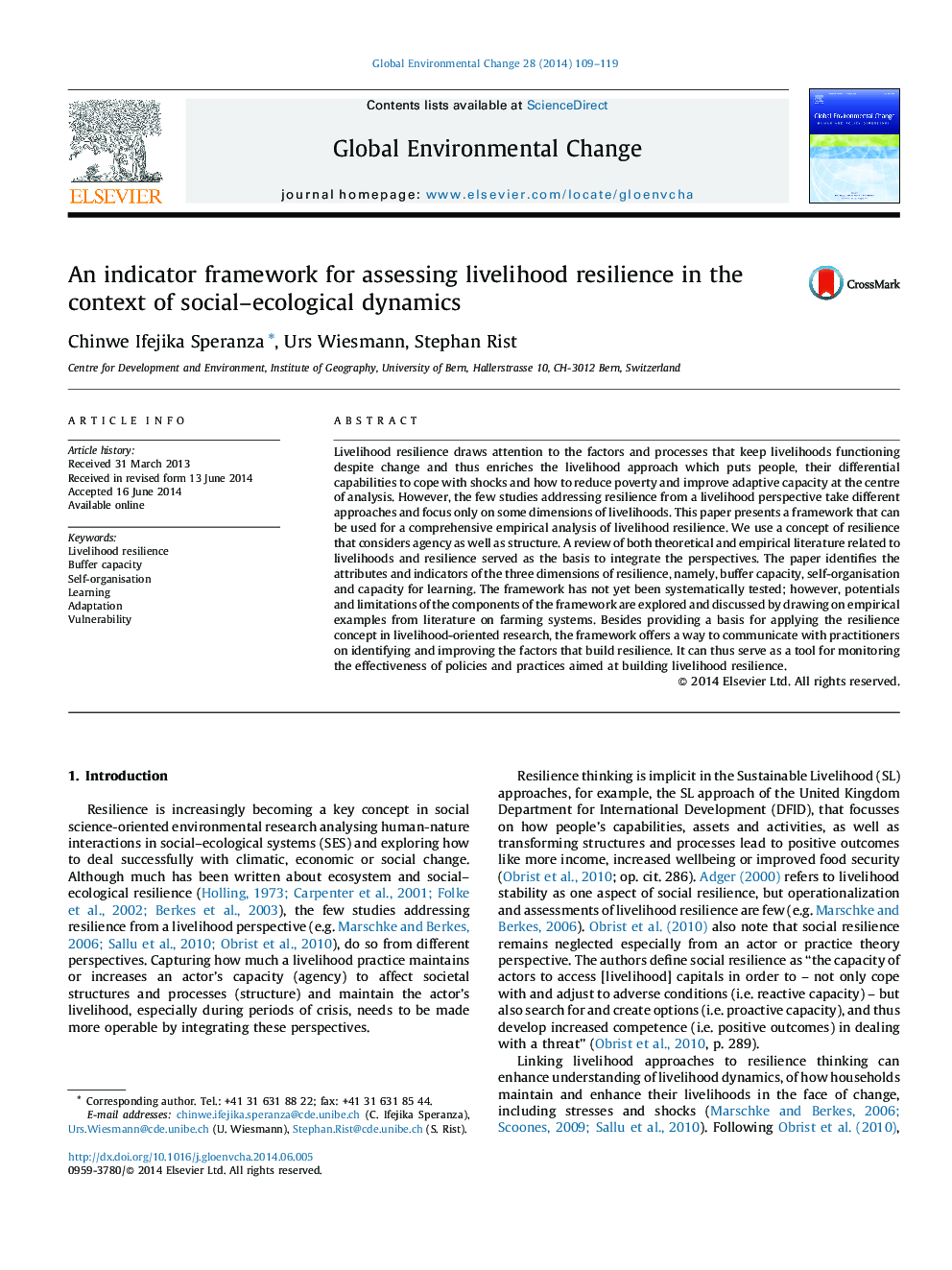| Article ID | Journal | Published Year | Pages | File Type |
|---|---|---|---|---|
| 7470395 | Global Environmental Change | 2014 | 11 Pages |
Abstract
Livelihood resilience draws attention to the factors and processes that keep livelihoods functioning despite change and thus enriches the livelihood approach which puts people, their differential capabilities to cope with shocks and how to reduce poverty and improve adaptive capacity at the centre of analysis. However, the few studies addressing resilience from a livelihood perspective take different approaches and focus only on some dimensions of livelihoods. This paper presents a framework that can be used for a comprehensive empirical analysis of livelihood resilience. We use a concept of resilience that considers agency as well as structure. A review of both theoretical and empirical literature related to livelihoods and resilience served as the basis to integrate the perspectives. The paper identifies the attributes and indicators of the three dimensions of resilience, namely, buffer capacity, self-organisation and capacity for learning. The framework has not yet been systematically tested; however, potentials and limitations of the components of the framework are explored and discussed by drawing on empirical examples from literature on farming systems. Besides providing a basis for applying the resilience concept in livelihood-oriented research, the framework offers a way to communicate with practitioners on identifying and improving the factors that build resilience. It can thus serve as a tool for monitoring the effectiveness of policies and practices aimed at building livelihood resilience.
Related Topics
Life Sciences
Environmental Science
Environmental Science (General)
Authors
Chinwe Ifejika Speranza, Urs Wiesmann, Stephan Rist,
